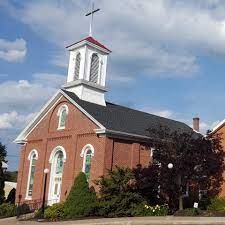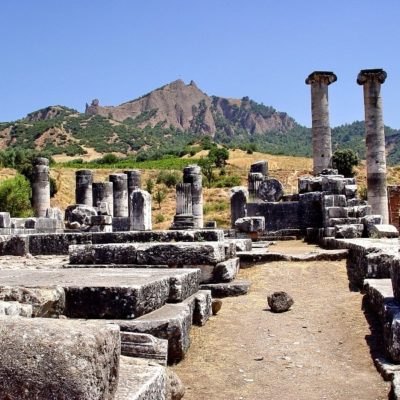Schwenkfelder Church

Introduction:
Caspar or Kaspar Schwenckfeld von Ossig (German theologian) who led the Protestant Reformation in Silesia. He was a representative of a phenomenon called Reformation by the Middle Way, and he established societies that survive in the United States as the Schwenckfelder Church.
Schwenckfeld rejected Luther’s idea of Real Presence and came to a spiritual interpretation of the Lord’s Supper, which was subsequently rejected by Luther. Schwenckfeld began to teach that the true believer ate the spiritual body of Christ. He took strong efforts toward reformation wherever he went, but also criticized reformers that he thought went to extremes. He emphasized that for one to be a true Christian, one must not change only outwardly but inwardly. Because of the communion and other controversies, Schwenckfeld broke with Luther and followed what has been described as a “middle way”.
Though followers have held the teachings of Schwenkfeld since the 16th century, the Schwenkfelder Church did not come into existence until the 20th century, due in large part to Schwenkfeld’s emphasis on inner spirituality over outward form. He also labored for a fellowship of all believers and one church. By the middle of the 16th century, there were thousands of followers of his “Reformation by the Middle Way”. His ideas appear to be a middle ground between the ways of the Reformation of Martin Luther, John Calvin and Huldrych Zwingli, and the Radical Reformation of the Anabaptists.
History
The Schwenkfelders are descendants of the followers of Caspar Schwenckfeld von Ossig. Caspar Schwenckfeld von Ossig (1489-1561) was a German nobleman from Silesia who led a group that called themselves the “Confessors of the Glory of Christ” in the Protestant Reformation. They extended the right hand of Christian fellowship to anyone who accepted Jesus Christ as Savior and Lord and sought to make faith a living reality in each Christian’s life. The Schwenkfelders fled religious persecution in 1731-1737 and settled in southeastern Pennsylvania.
Caspar Schwenckfeld von Ossig raised in a devout Roman Catholic home, and educated for diplomatic service, which ended at age twenty-nine, when he lost his hearing. He experienced a spiritual awakening from reading the writings from Wittenberg and Luther. Some of the teachings of Schwenckfeld included opposition to war, secret societies, and oath-taking, that the government had no right to command one’s conscience, that regeneration is by grace through inner work of the Spirit, that believers feed on Christ spiritually, and that believers must give evidence of regeneration. He rejected infant baptism, outward church forms, and “denominations”. His views on the Eucharist prompted Luther to publish several sermons on the subject in his 1526 The Sacrament of the Body and Blood of Christ.
Pressure from both Roman Catholics and Protestants prompted King Ferdinand of Silesia to banish Schwenckfeld from his estate. He was forced to living in exile, until his death on December 10, 1561. His followers were all “spiritual heirs” who were attracted to his reforming spirit of “The Middle Way,” between literal Biblicism and blind Sacramentalism.
During his life and after his death those who adhered to his expression of the Christian faith existed without any formal organization. Some attended the recognized churches (Roman Catholic and Lutheran), others refused. They met in private homes for worship and study and visited churches where pastors were willing to honor Schwenckfeld’s writings until the 1540s, when the ruling prince ordered strict adherence to the Augsburg Confession. Schwenkfelders who did not comply were tried, exiled, imprisoned, sent to Vienna as galley slaves, or pressed into service as soldiers against the Turks.
Schwenckfeld did not organize a separate church during his lifetime, but followers seemed to gather around his writings and sermons. These followers became known as Schwenkfelders. A group arrived in Philadelphia in 1731, followed by five more migrations up to 1737. In 1782, the Society of Schwenkfelders was formed, and in 1909 the Schwenkfelder Church was organized.
A catechism was prepared by Christopher Schultz in 1763. He prepared the Schwenkfelders to adapt to the totally different life in America, where those who had been their persecutors in Europe were now their neighbors and friends. In a new climate the Schwenkfelders began a new era. The Schwenkfelder catechism did not forbid the outward practice of baptism, confirmation, communion, and ordination; at the same time his position was to follow a church life in which these rites were excluded.
The early twentieth century the Schwenkfelder churches changed from German to English in their worship services, the resources that were used were not translated but new ones were written. In 1928 the Schwenkfelders published a Book of Worship for Church and Home, borrowing from Congregational, Reformed, and Presbyterian material “in the spirit of Denominational Fellowship
Belief:
The Schwenkfelder Church believes in glorifying and worshiping the Father as Creator and King, Jesus Christ as Lord and Savior, and the Holy Spirit as Sustainer and Empowerer. He is the center of all that we do, providing purpose for our time, talents, and treasure…to extend His Kingdom.
The Schwenkfelder Church believes honoring the written Word of God, the ultimate authority in our individual lives and in the life of Central Schwenkfelder Church.
The Schwenkfelder Church believes in spreading the good news of God’s salvation and love in Jesus Christ through outreach to others both locally and globally.
The Schwenkfelder Church believes in studying the Bible to gain knowledge and understanding about the past, present, and future, in order to foster our life-long spiritual growth through faith in Jesus Christ.
The Schwenkfelder Church believes in Unity in the Christian Essentials and embracing the historic agreements* of the Christian Church. God’s love is manifested through His church by way of unity and harmony among believers.
The Schwenkfelder Church believes and teaches the Bible is the source of Christian theology, but also believe it is dead without the inner work of the Holy Spirit.
The Schwenkfelder Church believes the divinity of Jesus was progressive, and that the Lord’s Supper is a mystical spiritual partaking of the body of Christ in open communion.
The Schwenkfelder Church believes adult baptism and both infant baptism and consecration of infants is practiced depending on the church. Adult members are also received into church membership through transfer of memberships from other churches and denominations.
Reference:
Official website for the Schwenkfelder Church : http://www.centralschwenkfelder.com/
Cite Article Source
MLA Style Citation:
Holstein, Joanne “Schwenkfelder Church:.” Becker Bible Studies Library Oct 2013.< https://guidedbiblestudies.com/?p=2472,>.
APA Style Citation:
Holstein, Joanne (2013, October) “Schwenkfelder Church:.” Becker Bible Studies Library. Retrieved from https://guidedbiblestudies.com/?p=2472,.
Chicago Style Citation:
Holstein, Joanne (2013) “Schwenkfelder Church:.” Becker Bible Studies Library (October), https://guidedbiblestudies.com/?p=2472, (accessed).


